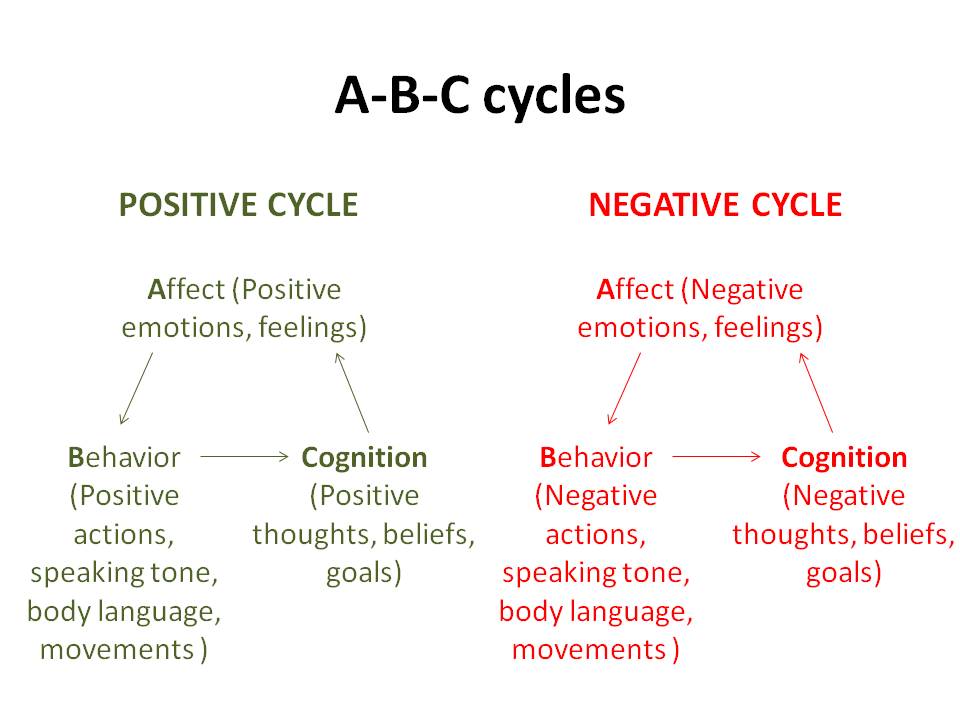 Once you’ve got your vision and strategies, the next step to success is building belief. Beliefs can change our biology, elevate our confidence, and predict our success.
Once you’ve got your vision and strategies, the next step to success is building belief. Beliefs can change our biology, elevate our confidence, and predict our success.
From: Psychological Foundations of Success
Belief is a powerful predictor of success. Research consistently shows that those confident in their ability to make life changes are far more successful in those efforts than those who question their ability to change.
And just how important is belief in oneself (self-confidence)?
From: Psychological Foundations of Success
When comparing people based on self-efficacy (self-confident with specific tasks), people with higher self-efficacy are more likely to:
Set specific challenging goals, and be more committed to those goals
Perform better and accomplish more
Be more proactive, more motivated and work harder
Successfully follow through on their New Year’s resolutions
Prevent a single lapse from snowballing into a full-blown relapse
Be successful at tackling problems of anxiety, alcoholism, smoking, obesity, and depression.
All good stuff.
And the downside for a lack of self-confidence or a lack of belief?
From: Psychological Foundations of Success
Lack of belief is also evident in self-handicapping. Usually people try to avoid handicaps, but a lack of belief can actually lead people to seek out handicaps that undermine their own performance.
For some, this self-handicapping manifests itself as alcoholism, but others use procrastination, lack of effort, panic attacks, asthma, depression or grief. In each case, the root cause is the same: a lack of belief in their abilities triggers a wider insecurity.
Believing in ourselves has a tremendous impact on success in life. And how can be build it?
How To Build Belief
Let’s start with two ways. First with ABCs. Then with baby steps.
First, the ABCs. Bare with me. This gets a little heady.
A, B, and C represent the 3 things of our shared human experience.
A stands for Affect, or emotion; our feelings (heart)
B stands for Behavior; our actions, mannerisms, etc. (body)
C stands for Cognition; our thoughts, beliefs, etc. (mind)
Together the ABCs form an ABC cycle. Positive ABC cycles are ideal for success as our mind, heart and body align in a healthy way, whereas negative ABC cycles can derail us from success. See picture below.
To be successful, we need to understand the impact of our ABC cycles. They all impact each other.
Just as our emotions affect our behaviors, research suggests that our emotions affect our thoughts. Our “A’s” (emotions) shape our “C’s” (thoughts).
From: Psychological Foundations of Success
In a phenomenon called “state-dependent memory,” good moods bring to mind good memories, and bad moods bring to mind unpleasant memories.
Fully three-fourths of those who successfully make changes in their lives experience substantial positive changes in their emotions, compared to fewer than one-tenth of those who fail in making life changes.
To succeed, and to truly believe we will succeed, we must turn negative ABC cycles into positive ones.
Remember Bob (our success example)?
Dr. K says that anyone, like Bob, wanting to lose weight must contend with a complex ABC cycle centered on eating and exercise.
More related insight…
From: Psychological Foundations of Success
Cognitions (thoughts) might include: “Losing weight would make me happy.” “Dieting sucks.” “Sometimes you have to enjoy life.”
Behaviors might include: Quantity or quality of food eaten. Speed of eating. Exercise and social habits.
Affective (emotional) responses might include: The pleasure of eating. Dissatisfaction with appearance. Shame after bingeing. Discomfort and self-consciousness when exercising.
Success and Belief are much more likely to occur if we focus on changing a whole constellation of Affective responses (emotions), Behaviors and Cognitions (thoughts).
Why?
From: Psychological Foundations of Success
Those using ONLY cognitive (thought) OR behavioral strategies to quit smoking have short-term relapse rates of 55%,
whereas those who use both cognitive and behavioral strategies have relapse rates of 13%.
The more you get A, B, and C positive, the greater the chances of success.
Back to Bob.
In steps 1 and 2, he covered C and B of the cycle.
Step 1 – Bob’s vision was his (C) cognitive activity based on his future thoughts. (A healthy Bob 10 years from now, 15 pounds lighter, etc.).
Step 2 – Bob’s strategy focused on his (B) Behaviors to achieve that vision. (Experiment with a low carb diet, hire a trainer, etc.)
Now, to drive the ABC cycle with more positive power, Bob needs to rev up A (affect) emotions.
What’s the easiest way to Rev Up positive emotions?
Dr. K recommends several. I picked two of his because I’ve seen both of them bring out positive emotions for my clients and myself.
One program proven to Rev Up positive emotions is Unleash the Power Within.
Second, the technique that always works to build belief is to begin with baby steps.
From: Psychological Foundations of Success
The ancient wisdom of the I Ching states that the process of change should begin with the EASY and the SIMPLE (I AGREE!). Two thousand years later, experts on psychological change concluded that there are two crucial rules for shaping your own behavior.
(1) You can never begin too low.
(2) The steps upward can never be too small.
And a great way to begin taking baby steps is…
From: Psychological Foundations of Success
Start with “guaranteed successes” – things you know you can do.
That’s how Bob did it! Here’s a recap of his success journey so far.
Bob, A Real-Life Success – Step 3. Belief
Step #1. Vision. Bob envisions a healthier future for himself. 15 pounds lighter. Have a stronger core, improve work-life balance and live a healthy lifestyle for next ten years. (To build belief, he needed a positive vision (Cognition) for the C of his positive ABC cycle)
Step #2. Strategy. Bob’s strategy is loaded with approach goals. He gets new recipes, experiments with a low carb diet, researches safe and effective supplements, gets a trainer, gets his family involved with fitness, etc. (To build belief, he needed strategies (Behaviors), which are the B of his positive ABC cycle).
Step #3. Belief. Bob begins with baby steps and guaranteed successes. He commits to personal training twice a week. And he and his trainer get started with goals he can achieve to be a success. Bob builds his belief with guaranteed successes, which fuels positive emotions. The positive emotions become the A (Affect) of his positive ABC cycle.
Bob’s now got his positive ABC cycle spinning powerfully. He is living success.
But, what if Bob gets bored, results slow down, exercise becomes a chore, the diet thing ain’t so cool anymore?
What does he do?
He climbs to Step 4.
Got to Step 4 of Success
WRAP- UP
- Step 3 to success is building belief. Belief in oneself or self-confidence significantly impacts success, whereas lacking belief in oneself handicaps one’s chances for success.
- One way to build belief is to work towards developing positive ABC cycles to align one’s heart (A), mind (C) and body (B).
- Another way to build belief or self-confidence is to begin with baby steps. Start with guaranteed successes to fuel positive emotions.



